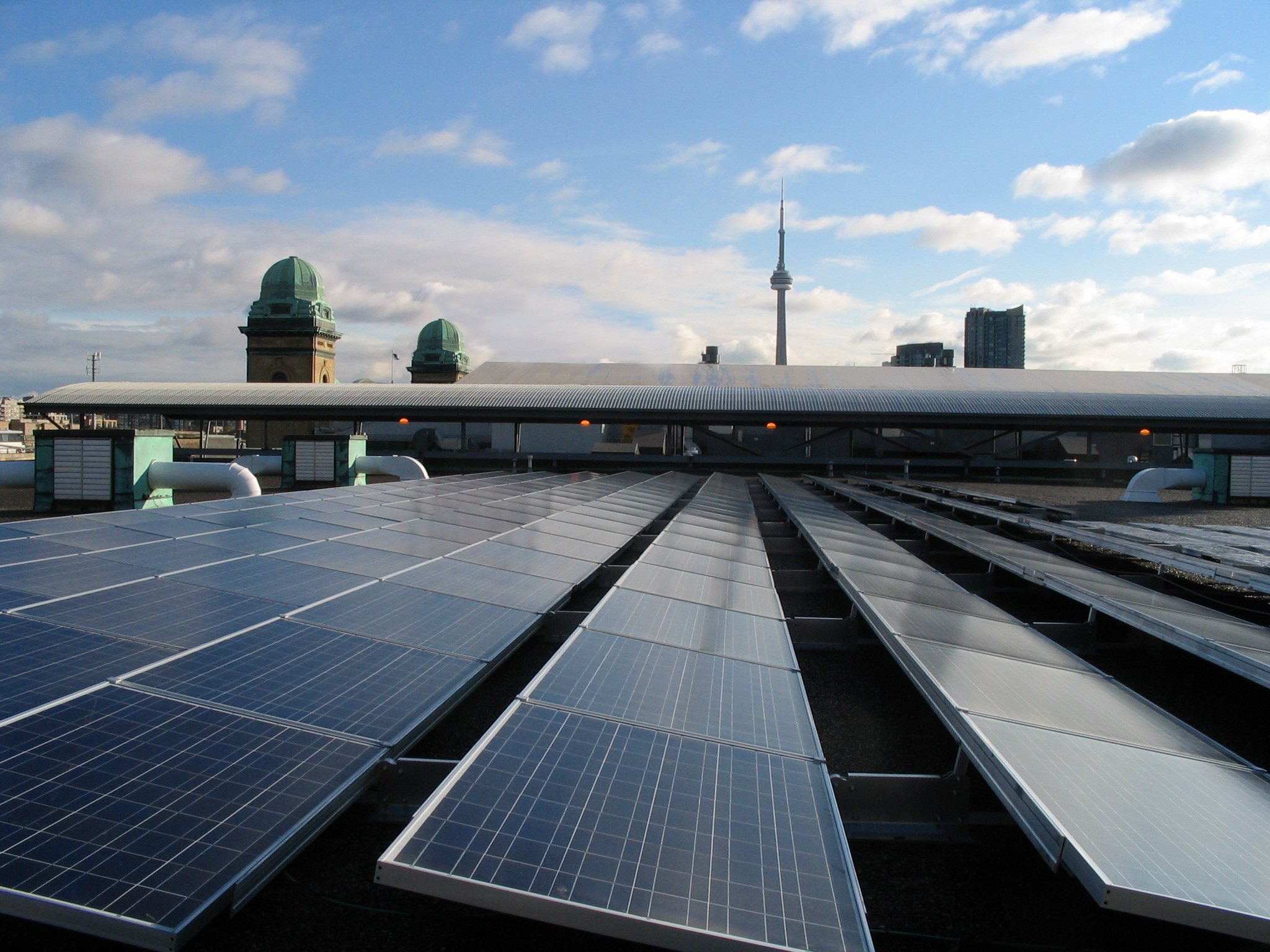Photovoltaics
 Solar photovoltaic (PV) installations generate low-carbon electricity from sunlight. Up until the last decade or so, PV was relegated mostly to niche off-grid applications; but now, many PV technologies are mature and economies of scale have driven down prices to the point where, across may jurisdictions, PV is comparable in cost to conventional polluting alternatives. Beyond just being an energy generator, PV has numerous technical advantages; it’s scalable, decentralized, can be deployed with smart inverter technology and it uses a resource that is available nearly anywhere (in varying levels) for free. It can electrify remote and under-serviced communities. It can make electrical grids more resilient in the face of storms and natural disasters. It can even help to stabilize the quality of power on the grid itself. PV offers these benefits while producing clean electricity that helps to mitigate the carbon emissions that are driving global climate change.
Solar photovoltaic (PV) installations generate low-carbon electricity from sunlight. Up until the last decade or so, PV was relegated mostly to niche off-grid applications; but now, many PV technologies are mature and economies of scale have driven down prices to the point where, across may jurisdictions, PV is comparable in cost to conventional polluting alternatives. Beyond just being an energy generator, PV has numerous technical advantages; it’s scalable, decentralized, can be deployed with smart inverter technology and it uses a resource that is available nearly anywhere (in varying levels) for free. It can electrify remote and under-serviced communities. It can make electrical grids more resilient in the face of storms and natural disasters. It can even help to stabilize the quality of power on the grid itself. PV offers these benefits while producing clean electricity that helps to mitigate the carbon emissions that are driving global climate change.
New PV technologies and control approaches are emerging constantly. The Kortright location of the Living City Campus, and the wider network of Living City Labs, provides the expertise and experimental testing infrastructure that is needed for their evaluation and development, and also needed to ensure that the broader context, in terms of standards, codes, best-practice guidelines, etc., is keeping pace with the rate of technological development.
